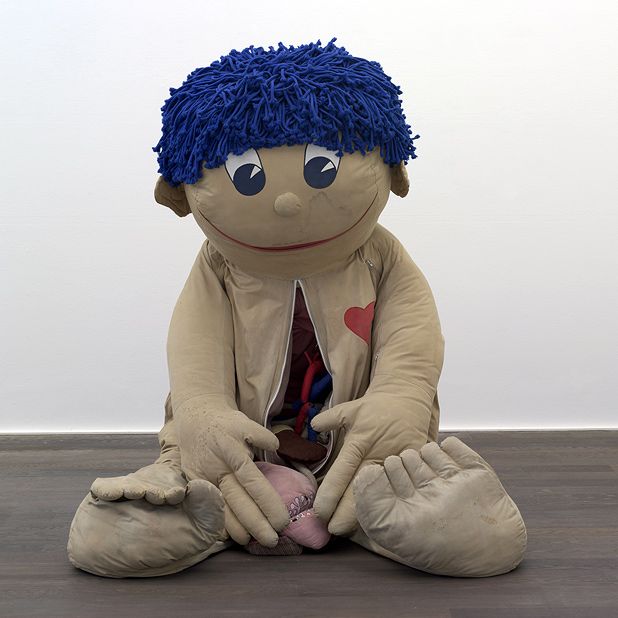Childish Things explores surrealist use of childhood themes in art

Edinburgh Fruitmarket exhibition features works by Louise Bourgeois, Susan Hiller and Jeff Koons
From St Paul’s assertion of adult intent to the Corinthians to Rousseau’s call for clemency towards its fundamental freedoms (‘childhood is the sleep of reason’), notions of childhood and childish behaviour have long fascinated and divided artists. To play or not to play is all too often cited as the very definition of change and reaction in modern art. And what of the objects, toys and playthings that allow such freedoms?
Enough cod philosophy already.
It’s fun time at the Fruitmarket, albeit of a slightly sinister and creepy variety (coulrophobics, those with a fear of clowns, are best staying away – that’s you Johnny Depp and P Diddy). Following on from the popular 2006 Dada’s Boys exhibition – a fresh look at the pre-WWI anti-art movement which gave rise to surrealism – academic and curator David Hopkins is stepping away from Duchamp’s urinal for more poppy, garish joys. ‘It’s been a few years now since I had the idea. I think it was a reaction of sorts to the historical nature of Dada’s Boys. It just dawned on me that no one had ever put on an exhibition to do with toys, toy-like forms and the connections with British and American art from the 1980s and 90s.’
Hopkins and the Fruitmarket have brought together an impressively mischievous team of foot stamping provocateurs. There’s the mighty Louise Bourgeois’ glass cabinet of fabric mythologies that ‘invites associations between toy-like figures and notions of archeological/psychological retrieval’ according to Hopkin’s semantic-heavy catalogue notes. Or how about Helen Chadwick’s disturbingly shamanistic ‘The Juggler’s Table’ or the big ballsy and camp creations of Robert Gober and Jeff Koons (bears, burnt doll houses, playpens, you know the drill), or the Pinocchio fetishism, anatomical perversions and psycho-sexual ambiguities of the works of Mike Kelley, Paul McCarthy and Susan Hiller. It’s a dream team of playtime retrievalists and one that Hopkins believes is ‘emblematic of the 1980s and 90s.’
As a father himself Hopkins is aware of the potential controversies of such a show but he hopes it will be accessible to everyone on all levels. ‘There’s a connection here that everybody had a childhood so everyone can relate to the symbols and icons of childhood. But also, broadly speaking, I hope it makes people think about the anxieties people have about having children. We no longer treat children the same way the Victorians did. After Freud our relationship to them is different, more complex, and that’s reflected in the way these artists have taken these childish things and developed them.’
Hopkins is, however, at pains to point out that the show is not all skipping in a meadow with Koons’ giant inflatable rabbit. ‘It is a show about nostalgia and it should be amusing in parts but sections of it are also challenging and dark. There’s an idea here that we are trying to excavate the dark poetry of children and childhood.’
Whether Childish Things lives up to Hopkins’ previous feted show only time will tell, but one thing’s for sure the American writer Gene Fowler may have been onto something when he wrote: ‘What is success? It is a toy balloon among children armed with pins.’
Childish Things, Fruitmarket Gallery, Edinburgh, Fri 19 Nov–Sun 23 Jan.